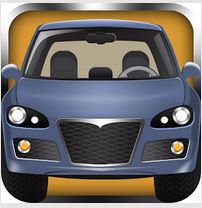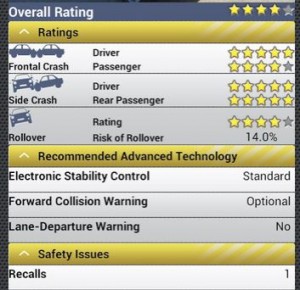Category Archive: Children and Cars
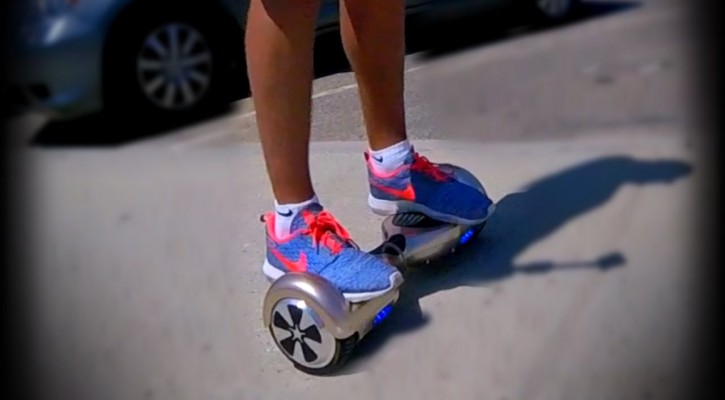
The Dangers Of Hoverboards
January 29, 2016
A week or so ago, as I was driving through my neighborhood, I came up on three kids riding hoverboards in the oncoming lane. The two boys and a girl, who looked to be around 13 years old, were moving along at a pretty good clip. The girl never took her eyes off of her cell phone while she was in my view. I thought, “here’s a crash waiting to happen.”
Hoverboards were the big gift item of the 2015 Christmas season and apparently sold like hotcakes. Just before Christmas, news reports started appearing showing hoverboard batteries that had caught fire and exploded; destroying at least one home in Louisiana. The fires are happening so often that a lot of college campuses banned hoverboards in their dorms.
While the fires are a legitimate cause for concern, a problem we aren’t hearing a lot about is the potential for serious injury among hoverboard users, especially if they take them on the road.
A statement published this week by the chairman of the Consumer Products Safety Commission (CPSC) addressed both the problems of the battery fires and the potential for serious injury by hoverboard users.
At least two teens – one in England and one in Dubai – died when they were thrown from their hoverboards into oncoming traffic. While the CPSC has started collecting data on hoverboard injuries and emergency room (ER) visits, it’s still too early to see if any trends are developing. The only similar activity is skateboarding which leads to an average of 111,000 ER visits by kids under the age of 18 each year. While many of those visits involve sprains, scrapes, and bruises, a significant number also involve traumatic brain injury. In 2014, 28 people were killed in skateboarding related crashes.
One major difference between skateboards and hoverboards is that, unlike skateboards, hoverboards can accelerate on their own depending on the weight and body positioning of the user. New users will have a steep learning curve before they can have total control over the boards.
After a teen in England was killed using a hoverboard, police were quick to remind people that, in the minds of the law, hoverboards are basically Segways without handles and the use of Segways on public property of any kind is illegal. In the US, the technology is so new that most states don’t have laws to cover them yet.
In Florida, if hoverboards are considered to be the same as a Segway without handlebars, they would fall under the law regarding “electric personal assistive mobility devices (EPADs)” and are allowed:
(a) On a road or street where the posted speed limit is 25 miles per hour or less.
(b) On a marked bicycle path.
(c) On any street or road where bicycles are permitted.
(d) At an intersection, to cross a road or street even if the road or street has a posted speed limit of more than 25 miles per hour.
However, if the hoverboard user is under the age of 16, they must wear a bicycle helmet that meets the standards of:
- the American National Standards Institute (ANSI Z Bicycle Helmet Standards);
- the standards of the Snell Memorial Foundation (1984 Standard for Protective Headgear for Use in Bicycling);
- or any other nationally recognized standards for bicycle helmets which are adopted by the department.
Counties, cities and towns can make regulations regarding EPADs and the Department of Transportation can ban their use on roads where they might otherwise be used if it’s felt that the regulations or bans are in the interest of safety.
Children who use hoverboards should:
- Always wear protective equipment such as helmets and knee and elbow pads.
- Always be supervised when riding.
- Restrict their riding to sidewalks and stay out of traffic.
Owners of hoverboards should:
- Never leave the hoverboard to charge overnight without supervision. The charging process increases the risk of a fire.
- Keep a fire extinguisher near the hoverboard charging station.
For additional hoverboard safety recommendations, visit: Statement from the U.S. CPSC Chairman Elliot F. Kaye on the Safety of Hoverboards
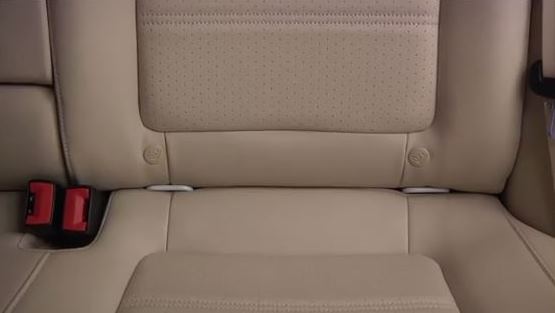
IIHS Rates Child Safety Seat LATCH Mechanisms
June 25, 2015
The Insurance Institute for Highway Safety (IIHS) has come out with a rating list of child safety seat LATCH mechanisms. LATCH (Lower Anchors and Tethers for Children) systems, which have been required equipment on passenger vehicles since 2002, are supposed to make it easier for parents and caregivers to safely install child safety seats. In this first review of LATCH system ease of use, few cars made the grade.
LATCH systems consist of anchor points low on the seat and tether points on the back of the seat. Research shows that child seats installed with LATCH, rather than with vehicle seat belts, are more likely to be installed correctly. Whether or not parents use LATCH correctly depends on the attachment point’s visibility and ease of access.
According to an American Academy of Pediatrics study in 2014, 93 percent of new parents taking their newborn home from the hospital for the first time made at least one critical error in placing or attaching their infant car seat. LATCH systems are supposed to make that process easier but, according to the IIHS, most cars LATCH systems are difficult to find or are difficult to reach making it more difficult to attach car seats.
In conducting their study, the IIHS looked at five different criteria for a vehicle to receive a “good” rating:
- The lower anchors are no more than 3/4 inch deep in the seat bight.
- The lower anchors are easy to maneuver around. This is defined as having a clearance angle greater than 54 degrees.
- The force required to attach a standardized tool to the lower anchors is less than 40 pounds. (The tool represents a lower connector of a child seat, though the actual force required when installing a seat varies depending on the specific connector.)
- Tether anchors are on the vehicle’s rear deck or on the top 85 percent of the seatback. They shouldn’t be at the very bottom of the seatback, under the seat, on the ceiling or on the floor.
- The area where the tether anchor is found doesn’t have any other hardware that could be confused for the tether anchor. If other hardware is present, then the tether anchor must have a clear label located within 3 inches of it.
According to the IIHS, out of 102 models tested, only three models received a good rating; they are:
- BMW 5 series
- Mercedes-Benz GL-Class
- Volkswagen Passat
Out of the rest of the models tested, 44 were acceptable, 45 were marginal, and 10 were rated poor.
To read more and to view all of the models and their LATCH ease of use ratings, visit: IIHS launches ease-of-use ratings of LATCH hardware in vehicles
For information on choosing and installing the right car seat for your child, visit: Parents Central
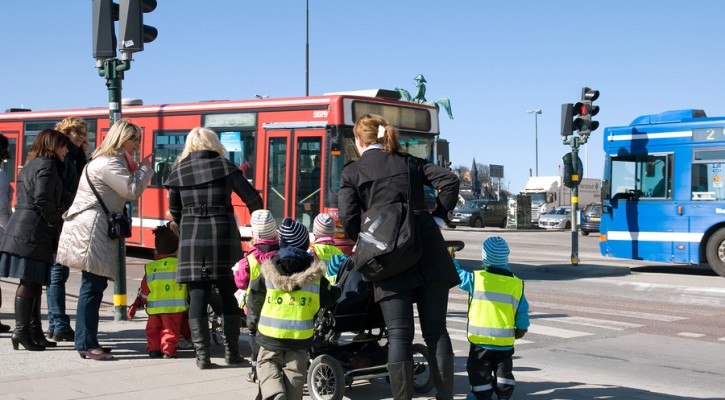
Reflective Vests At School Bus Stops
April 8, 2015
Should children be required to wear reflective vests at school bus stops? That’s the opinion of a South Carolina man after he was involved in a tragic incident last month.
At 6:30 in the morning, a 15 year old girl, escorting her younger siblings to school, tried to cross a four lane highway. Wearing dark clothes and crossing away from an intersection, she was struck first by a semi and then struck again as she was lying in the roadway. Police didn’t charge either driver because they felt there was little either driver could do to avoid hitting her.
Torn by the incident, the driver of the second vehicle wrote a letter to his state representative asking for a law that would require children at school bus stops to wear reflective vests.
His proposal isn’t a bad idea. While it may not be necessary for the state to pass a law, it is certainly something that school boards should encourage and parents can easily do on their own. With the time change last month, many kids are heading out to school while it’s still dark. Kids are impulsive and don’t always follow the rules. Anything that can be done to make them more visible is a good idea.
A quick search for children’s reflective vests on Google shows a wide variety of vests from $5 to $15. A cheap price to make the kids more visible. Reflective tape can also be sewn or pasted on backpacks at a very low cost.
Read more: Driver who hit Darlington teen asking lawmakers to require safety vests at bus stops
Feds Urge Parents To Make Tweens Buckle Up
March 13, 2015
It’s hard to get tweens to buckle up so the federal Department of Transportation (DOT) and the National Highway Traffic Safety Administration (NHTSA) are trying to do something about it. Citing alarming statistics of tweens (ages 8 to 14) who were killed because they weren’t wearing a seat belt, DOT and NHTSA announced a new campaign called “Never Give Up Until They Buckle Up.”
Parents who would never dream of bringing their newborn home from the hospital without a proper car seat and who taught their toddlers that the car wouldn’t start until everyone was buckled in seem to give up on tweens. With the rush-rush lifestyle of many families and so many short trips to school, practice and the store, it sometimes seems too much of a hassle to fight the seat belt fight with tweens.
Tweens are entering that age where they are starting to feel grown up. They’re experimenting with limits and testing the rules. They often feel like they’re too old for seat belts and, in order to show their independence, don’t bother to buckle up. That can be a deadly mistake.
According to NHTSA, “Over the past 5 years, 1,552 kids ages 8-14 were not wearing seat belts when they died in a crash, and one in four of those kids were age 14. That’s a trend that has to stop now.”
Among other important information, the Never Give Up Until They Buckle Up website has information for parents on:
The tween years are the time when it’s more important than ever to stress how important the rules are if tweens want to live long enough to become teens.
Read more: Don’t Give Up Until They Buckle Up

